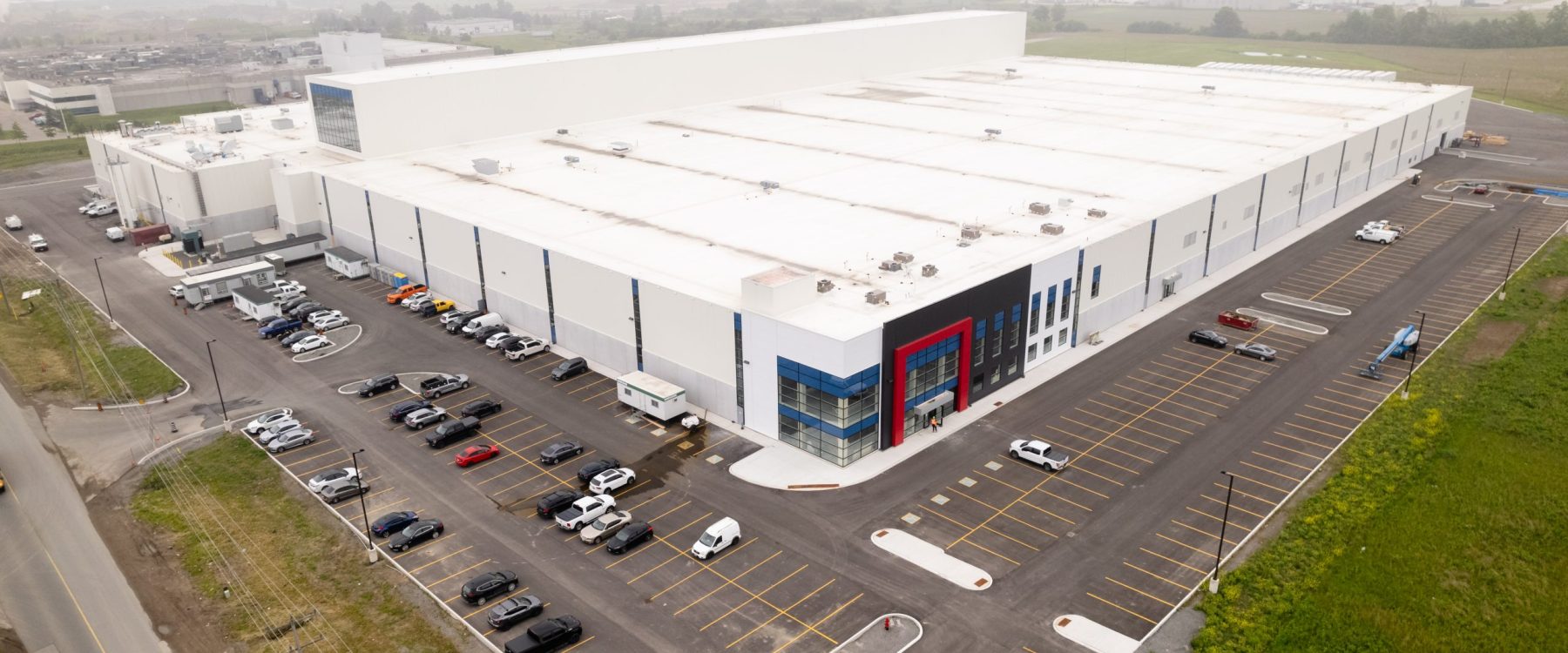Understanding the different types of building construction in Ontario is crucial for developers, architects, contractors, and business owners. Construction classifications play a key role in ensuring compliance with fire codes, safety regulations, and structural integrity. Choosing the right type of building construction impacts the longevity, safety, and cost-efficiency of a project.
Ontario follows the National Building Code of Canada (NBCC), which defines five main types of building construction. Each type is classified based on materials, fire resistance, and structural components. Whether you’re planning an industrial building, commercial project, retail space, restaurant, office, or institutional building, understanding these construction types helps ensure a smooth and successful build.
In this guide, we’ll explore the five primary types of building construction in Ontario, their characteristics, and the best applications for each.
The 5 Types of Building Construction in Ontario
The five types of building construction in Ontario are:
- Type I – Fire-Resistive Construction
- Type II – Non-Combustible Construction
- Type III – Ordinary Construction
- Type IV – Heavy Timber Construction
- Type V – Wood-Framed Construction
These classifications are based on the materials used and the fire resistance of the structure.
1. Type I – Fire-Resistive Construction
Best for: High-rise buildings, hospitals, and large commercial projects.
Type I construction is designed to offer maximum fire resistance. It uses non-combustible materials such as steel and concrete, which are protected by fireproofing materials. This type of construction is typically found in high-rise structures and large commercial or institutional buildings.
Key Features:
- Structural steel protected by fireproofing materials.
- Concrete walls, floors, and roofs.
- Fire resistance rating of 2 to 4 hours.
Advantages:
- High fire resistance increases safety.
- Low maintenance and high durability.
- Suitable for large-scale and high-occupancy buildings.
Common Applications:
- Industrial Building Construction
- Commercial Building Construction
- Institutional Building Construction
2. Type II – Non-Combustible Construction
Best for: Commercial buildings, retail spaces, and offices.
Type II construction also uses non-combustible materials, but with lower fire-resistance ratings than Type I. Steel and concrete are common, but the fireproofing is less intensive. This type is often used for mid-rise office buildings, retail spaces, and warehouses.
Key Features:
- Structural elements are made from steel or concrete.
- Less fireproofing than Type I construction.
- Fire resistance rating of 1 to 2 hours.
Advantages:
- Lower construction costs compared to Type I.
- Faster construction times.
Common Applications:
3. Type III – Ordinary Construction
Best for: Mixed-use buildings, low-rise apartments, and older commercial structures.
Type III construction is a combination of non-combustible exterior walls and combustible interior components. The exterior walls are typically brick or concrete, while the interior framework consists of wood or other combustible materials.
Key Features:
- Non-combustible exterior walls (e.g., brick, concrete).
- Wooden interior floors, partitions, and roofs.
- Fire resistance rating of up to 2 hours.
Advantages:
- More cost-effective than Type I and II.
- Flexible for mixed-use development.
Common Applications:
- Restaurant Building Construction
- Small Commercial Buildings
- Mixed-Use Developments
4. Type IV – Heavy Timber Construction (HTC)
Best for: Restaurants, retail spaces, and open-concept buildings.
Type IV construction features large wooden beams and columns, which offer natural resistance to fire due to their size and slow-burning nature. Heavy timber construction provides both structural strength and an attractive aesthetic.
Key Features:
- Exposed wooden beams and columns.
- Minimum dimensions for timber components to meet fire resistance requirements.
- Fire resistance rating of 1 to 2 hours.
Advantages:
- Strong resistance to collapse during fire.
- Warm, rustic aesthetic appeal.
Common Applications:
- Restaurant Building Construction
- Retail Spaces
- Event Venues and Lodges
5. Type V – Wood-Framed Construction
Best for: Residential buildings, small offices, and retail spaces.
Type V construction is the most common type used in residential and light commercial projects. It relies primarily on wood framing for structural support, making it cost-effective and easy to construct.
Key Features:
- Load-bearing walls, floors, and roofs made from wood.
- Least fire-resistant of the five types.
- Fire resistance rating of up to 1 hour.
Advantages:
- Cost-effective and quick to build.
- Flexible design options.
Common Applications:
- Small Office Building Construction
- Boutique Retail Spaces
- Multi-Family Residential
Choosing the Right Type of Building Construction in Ontario
Selecting the right type of construction for your project depends on several factors:
- Project Size: Larger projects typically require more fire-resistant materials (Type I or II).
- Intended Use: Commercial, industrial, and institutional buildings must comply with stricter building codes.
- Budget: Higher fire-resistance ratings often increase construction costs.
- Design Goals: The aesthetic and functional requirements of the project will influence material and structural choices.
Working with experienced Toronto building contractors ensures that your project meets all local building codes and safety requirements while achieving your architectural and design goals.
Importance of Construction Type in Building Design and Safety
Choosing the right type of construction is critical for:
- Ensuring fire safety and structural integrity.
- Reducing maintenance costs and increasing building longevity.
- Meeting local regulations and zoning requirements.
Reputable building construction companies with expertise in building design, building architecture, and building engineering can guide you in selecting the ideal construction type for your project.
Conclusion
Understanding the 5 types of building construction in Ontario is essential for any construction project. Each type offers unique advantages, fire resistance levels, and structural characteristics. From high-rise industrial buildings to small retail spaces, aligning your project with the correct construction type ensures safety, efficiency, and cost-effectiveness.
For expert guidance on building construction in Ontario, trust GTA General Contractors – experienced Toronto building contractors with a proven track record across industrial, commercial, retail, and institutional sectors.

